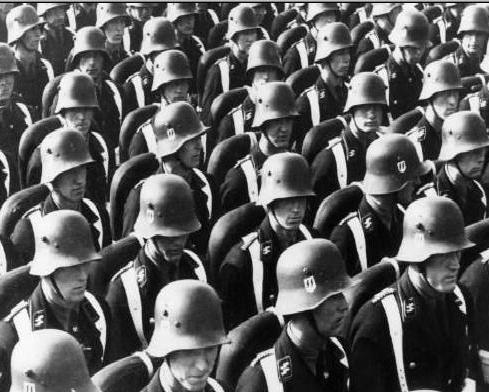Sarajevo Portal
February 20, 2010
http://www.sarajevo.net/content/159-Nazi-Gold
 |
This is the story of one of history’s largest ever heists and largest-ever hunts – a treasure hunt that will never end. The perp was, of course, Adolf Hitler. The hunters have included individuals and nations from around the world. At the outset of World War II, the German economy was depressed and hardly capable of underwriting the continental and then global offensive Hitler was imagining. The modus operandi of the Nazis thus became to loot gold, jewelry, artworks and all other riches from countries they conquered. For instance, the exercise of control over Czechoslovakia, Austria and Danzig between 1937 and 1939 wound up boosting Germany’s gold reserves by more than $70 million.
According to the U.S. State Department, during the course of the war the Germans stole more than $400 million in gold from occupied nations and more than $140 million from individuals. One of the most infamous, horrific war atrocities the Nazis committed was the extraction of gold fillings from the teeth of Jewish concentration camp inmates. More than half a billion dollars In all – and that was just the gold. Museums and private residences in Berlin were filled with ill-gotten masterworks, and when there was no more room in the capital, Hitler filled castles in remote Alpine realms with the overflow.
 |
Waffen SSWhen the Allies closed in near the war’s end, fleeing Nazis sought to hide what riches they could. A large supply of gold – as much as 100 tons – that was being kept in the Reichsbank was moved by rail when bombs started falling; some of it was stashed in a potassium mine 200 miles southwest of Berlin. This was recovered by Patton’s troops when workers at the mine told them what lay within, but much more has yet to be found.
Gold and currency that had already made its way into accounts in neutral countries such as Switzerland simply kept moving; a U.S. Treasury agent’s report that was filed in 1946 (and declassified 50 years later) indicated that millions of dollars in gold coins wound up in a numbered Swiss account belonging to the Vatican, and in January 2000, a civil suit was filed against the Vatican Bank, the Franciscan order and other defendants. The Mob may have grabbed a share: Lucky Luciano and Meyer Lansky had strong connections to the Swiss National Bank, and it has been reported that hundreds of millions of dollars in gold may have been laundered into their anonymous accounts.
Amber RoomAnd then, in lakes within the mountains of Austria, watertight casks full of Nazi gold were sunk to the bottom. New discoveries are made every year – in the lakes, in the mountains, in the most circumspect banks (for instance, in the Bank of England, where seven tons of Nazi gold were found in 1996). Investigations are constant, as are lawsuits. It is a certainty that the ledger will never be closed, but there is a holy grail for the treasure hunters, one thing they desperately hope to fund: the Amber Room.
 |
When Hitler’s army invaded the Soviet Union in 1941, they stole, among other valuables, the interior of a room from a St. Petersburg palace that was made entirely of amber gold. Perhaps the panels were lost at sea, as is rumored. Perhaps they were blown to bits by bombs. Perhaps they are buried in a cavern in Deutschkatharinenberg, Germany, as a 2008 dig – which failed – speculated. Until the Amber Room is found, the world has only a reproduction of it that has been constructed in Ekaterininsky Palace in Pushkin, a village near St. Petersburg. In its extravagance, its loudness and its brazenness, it fairly shouts of Nazi greed: They dismantled this, they spirited away, they sought to steal all that they could. They sought to rule the world.
Any original material on these pages is copyright © BishopAccountability.org 2004. Reproduce freely with attribution.